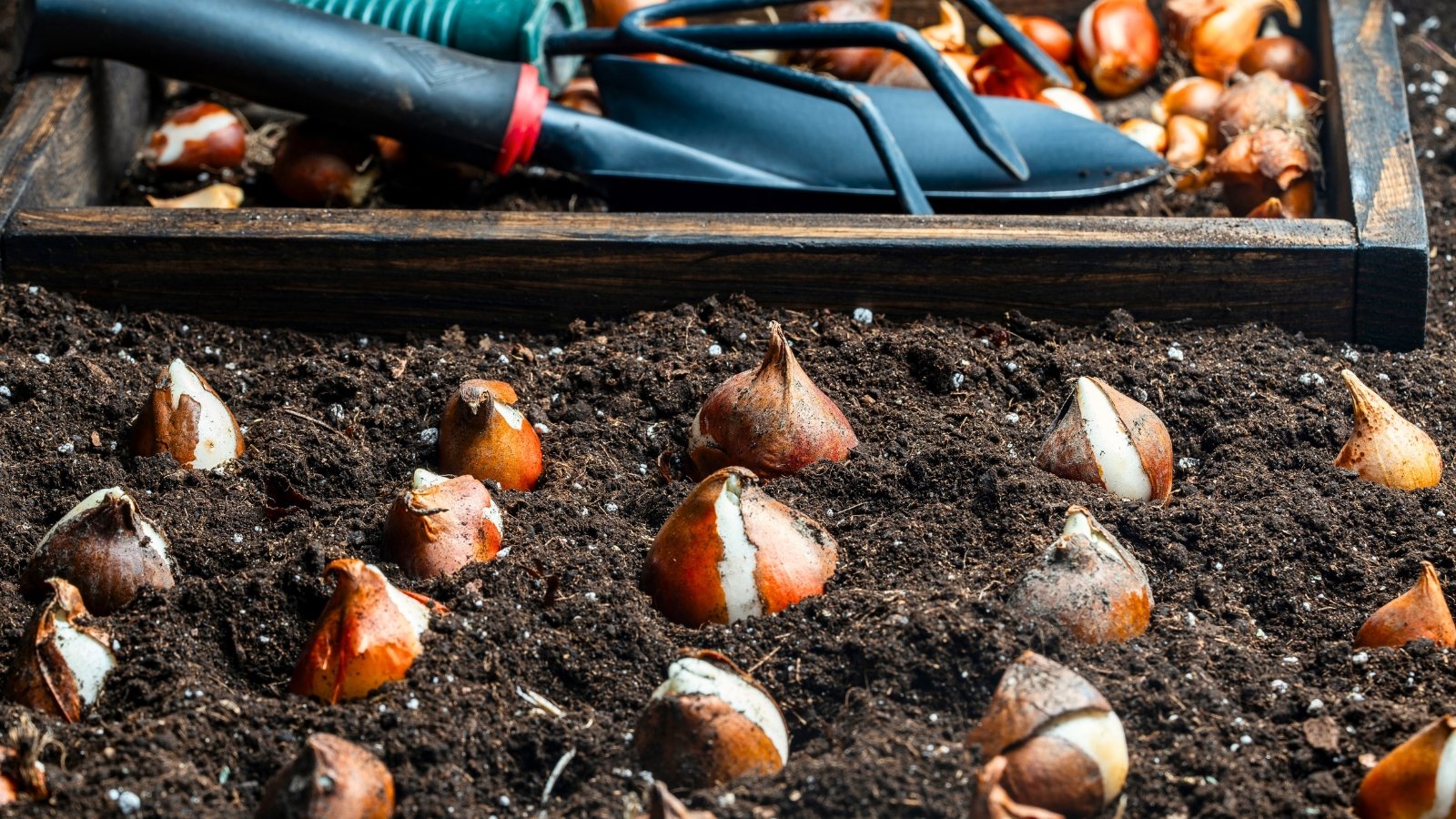[ad_1]
Tulips and their elegant cupped blooms, stately on slender stems, give a contented welcome to spring. Their single, double, and frilly varieties convey waves of early, mid, and late-season color. Appropriate planting throughout the fall ensures the proper flowering. Planting tulips utterly deep protects the dormant and creating bulbs in the direction of temperature fluctuations and moisture factors. It moreover permits an important chill time.
In a lot of rising areas, November is the optimum time to plant tulips for his or her spring current. Whether or not or not throughout the flooring, potted preparations, or forcing blooms indoors, be sure to understand how deep to plant your tulips to permit them to convey large yard rewards as temperatures warmth throughout the spring.
Tulip Overview
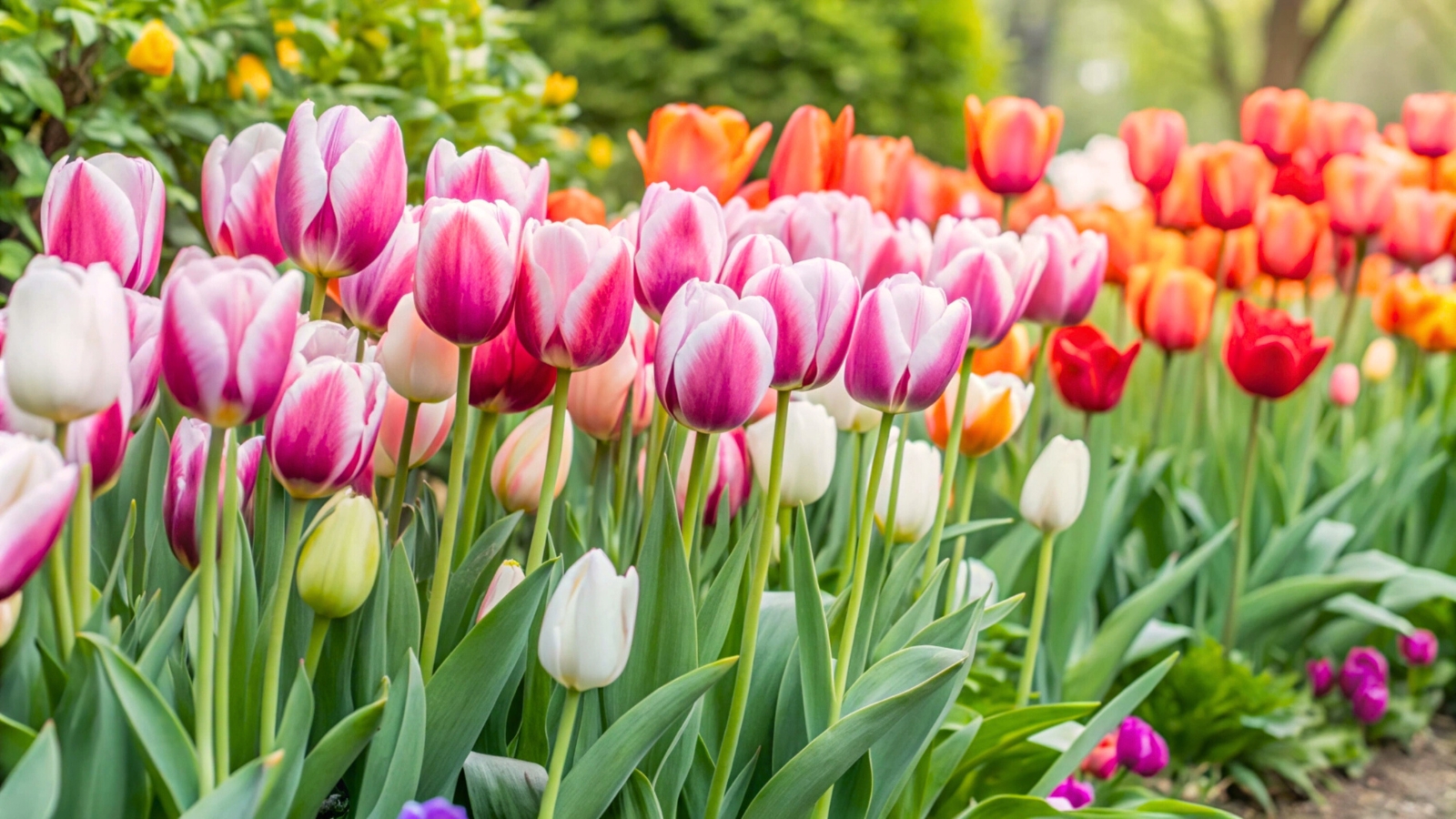

Native to Europe and Asia, tulips develop naturally in mountainous areas from the Balkans to the Himalayas, the place chilly, moist winters give choice to warmth, dry summers. As true bulbs, they develop by way of the cool season and flower in spring, coming into dormancy by way of the summer season. Flowers decline when soil temperatures warmth above 70°F (21°C).
Tulips are short-lived spring-flowering bulbs, usually grown as annuals for his or her strong present of their first rising 12 months. In subsequent years, their vigor declines. Some tulips remaining one to 2 years, whereas others widespread three to 4 years, counting on native climate, cultural conditions, and choice. They may perennialize in USDA zones 3-8 with varied outcomes, lasting for various years.
Most interesting Siting and Rising


The perfect foundation for rising tulips is the proper planting location in full photo voltaic to partial shade. Full photo voltaic (six or additional hours every day) promotes the proper flowering and properly being. The easy-going bloomers moreover do successfully throughout the dappled gentle of a tree cowl, with 4 or so hours of photo voltaic publicity.
Correctly-draining soils are essential, notably by way of the bulbs’ dormant interval earlier to and after flowering. Prolonged durations of soggy conditions within the summertime or winter make vegetation weak to bulb and root rot. Evenly moist soils with good drainage are most interesting by way of the rising season, whereas drier conditions throughout the warmth season promote perennializing.
When to Plant
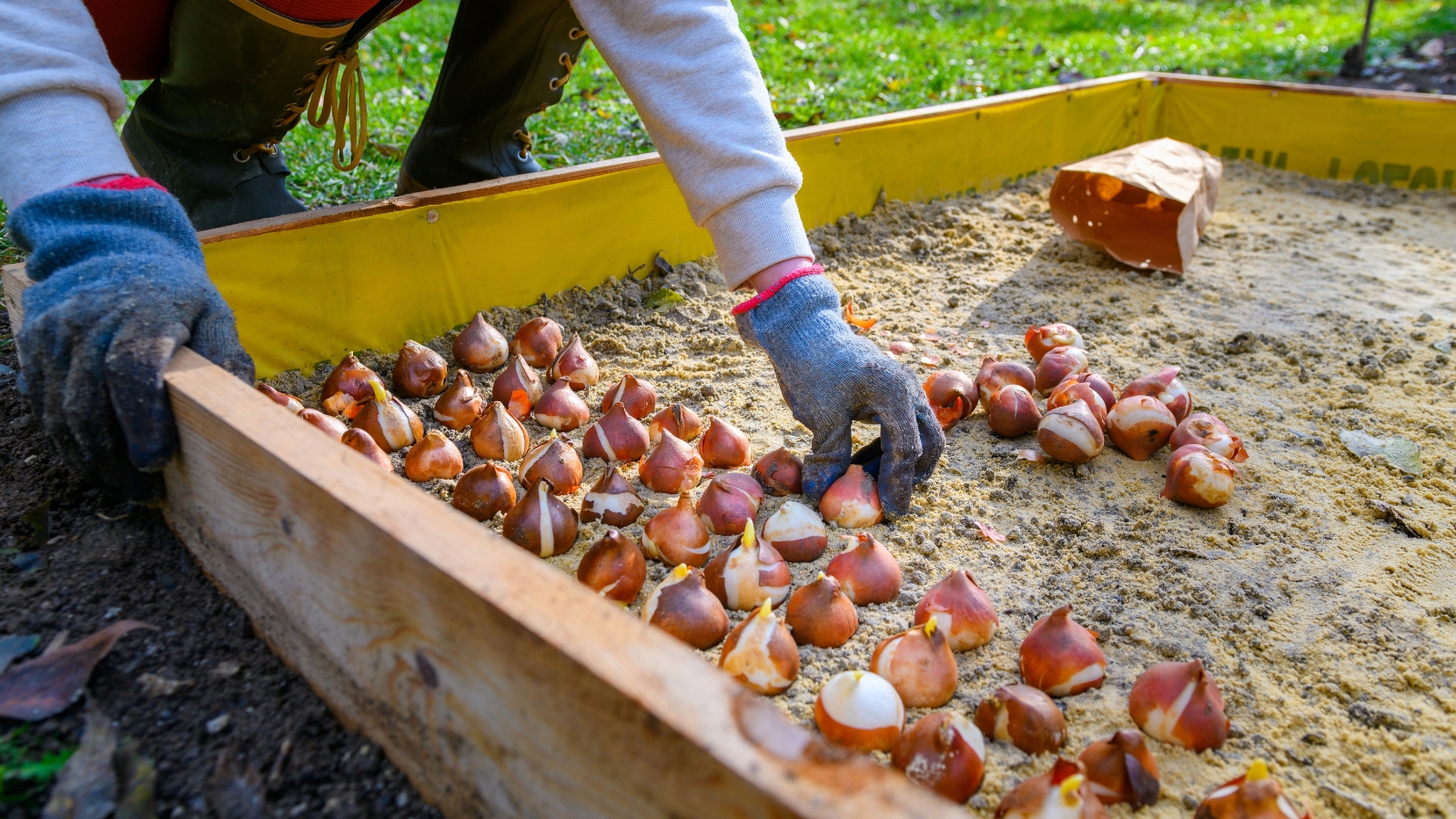

Tulips do most interesting with fall planting to allow an important winter chill interval, or vernalization. The autumn placement assists with reaching temperatures of spherical 35-45°F (2-7°C). Tulips need about 12 to 16 weeks of restorative chill.
Wait until scorching spells cross for a fall planting, most interesting when temperatures are throughout the 60s (~16°C) and reduce. For lots of areas, that’s in October and November. Planting is finest when the soil is workable, and the underside isn’t however frozen, nonetheless optimistic in case you’ve already had a heavy frost.
In warmth climates like zones 8 and 9, chances are you’ll plant by the use of December and January and into the spring. Go for pre-cooled bulbs from the grower to ensure they’ve met the required chill time for flowering. Or, give them 14 weeks throughout the fridge sooner than they go throughout the flooring.
In-Ground Depth
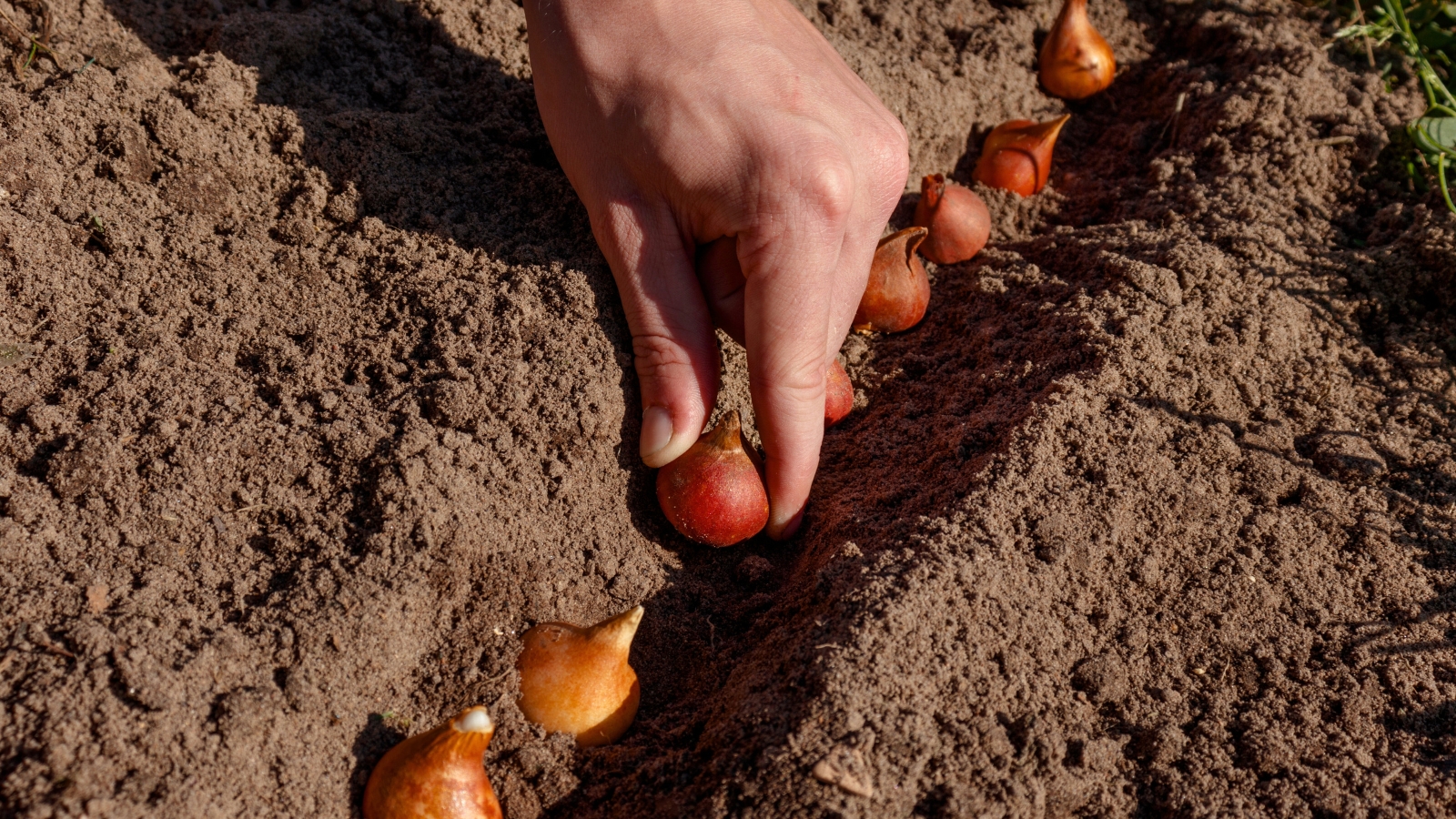

Counting on the variability, the widespread planting depth for tulips is 5 to six inches deep. The everyday spacing is 4 to six inches apart. Nonetheless, there’s a helpful trick to utilize throughout the topic: because of varieties and bulb sizes differ, a superb rule of thumb is to place the bulbs 3 occasions as deep as their dimension. A two-inch bulb, then, benefits from six inches of depth.
Tulips, like completely different spring-flowering bulbs, look most interesting in a mass or grouping. Cluster them rigorously with a spacing of twice the size of the bulb. Space the equivalent two-inch specimen 4 inches apart. Err on the facet of nearer comparatively than distant spacing for these vegetation. They’ll even develop shoulder to shoulder.
Orient them tapered facet up (root base down) for ease of growth. If planting in bulk, dig a trench or plot on the proper depth to fill and situate the bulbs sooner than overlaying them with soil. Tailormade to the job are handheld bulb planters and augers, helpful for giant exhibits.
In Containers
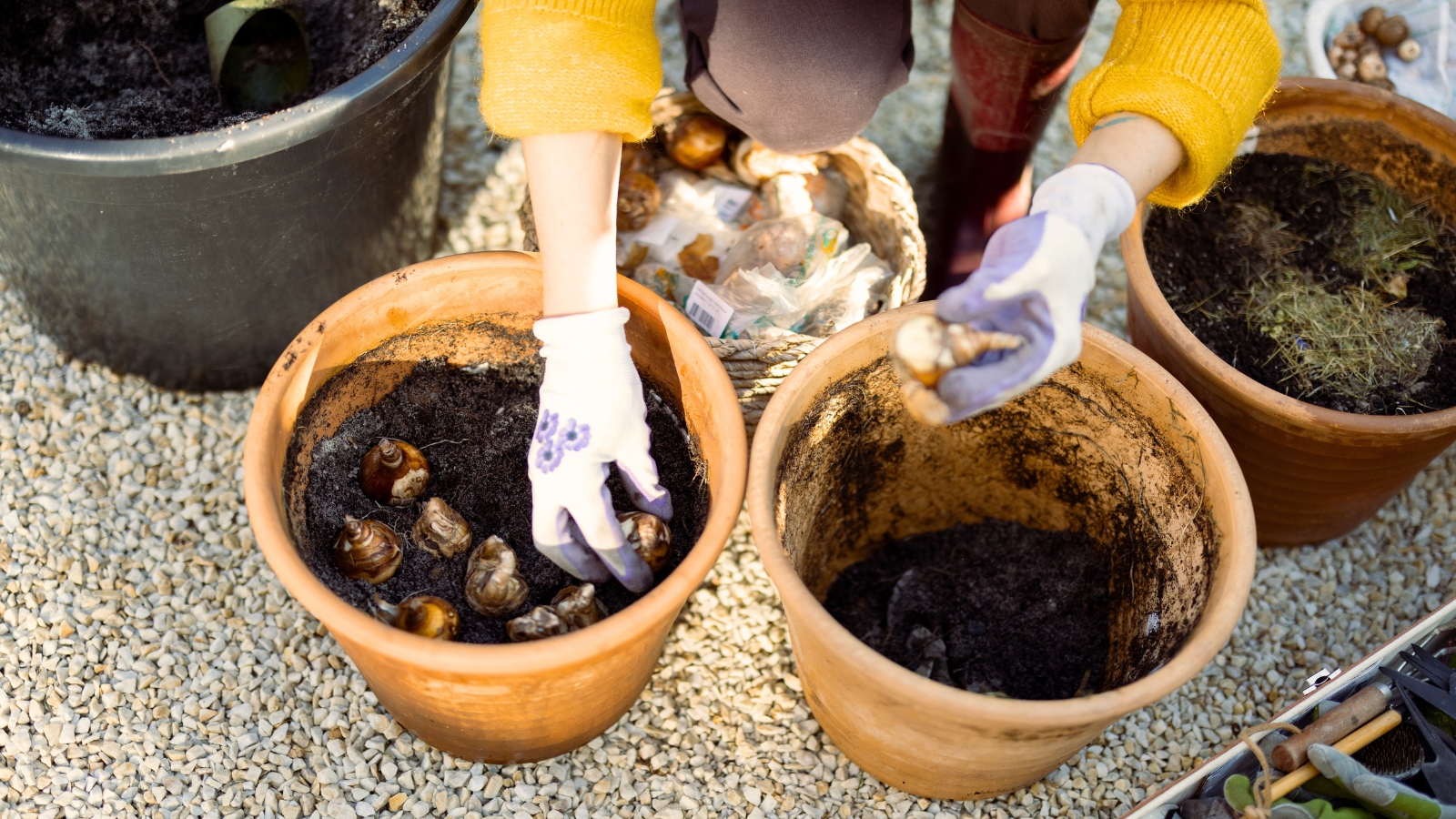

Tulips develop fantastically when planted dense and deep in containers. Pots allow for a nearer spacing than in-ground situations. For an plentiful look, completely fill the pot with bulbs. Underplant cool season annuals and perennials for a spring shock to transform the design.
Start with a well-draining potting media and partially fill the pots three-quarters full. Tuck the bulbs shoulder to shoulder and cover them with soil. Depart an inch or two of space beneath the pot’s rim sooner than the soil diploma. Water successfully until it runs by the use of the container and drainage holes.
For bulbs that need a winter chill interval to develop, place the pots outdoor this month. An unheated chilly physique or greenhouse works successfully, too. Nestle them close to a establishing or wall beneath a layer of leaves or mulch the tops for insulation. Open air, they’ll acquire ample seasonal moisture with out additional watering. If indoors or undercover, preserve the soil moist nonetheless not waterlogged.
After about 10 to 14 weeks, as temperatures warmth and new growth begins, uncover the containers and switch them to their present location for budding.
After blooming, stop watering and carry the bulbs for storage or composting.
Forcing Blooms


Many spring-flowering selections bloom indoors any time of 12 months by the use of forcing. You presumably can drive tulips into flowering after ample chilly publicity to convey their cheer to the interiorscape or create a shocking current.
To make bulb rising easy, purchase pre-chilled bulbs. Or, usher in containers overwintered outdoor as they current new growth.
Compelled tulips develop in a variety of attention-grabbing strategies, from mossy terrarium exhibits to rooting in water. Place them atop a bulb vase, jar, or dish, making certain solely the muse end (base) of the bulb is submerged. Further water safety ends in rot. Together with gravel can help situate the bulb.
To elongate the within present, preserve the blooms out of direct daylight and away drafts from heater vents and fireplaces. Conserving them cool at night helps flowers final extra.
Mulch and Winter Security
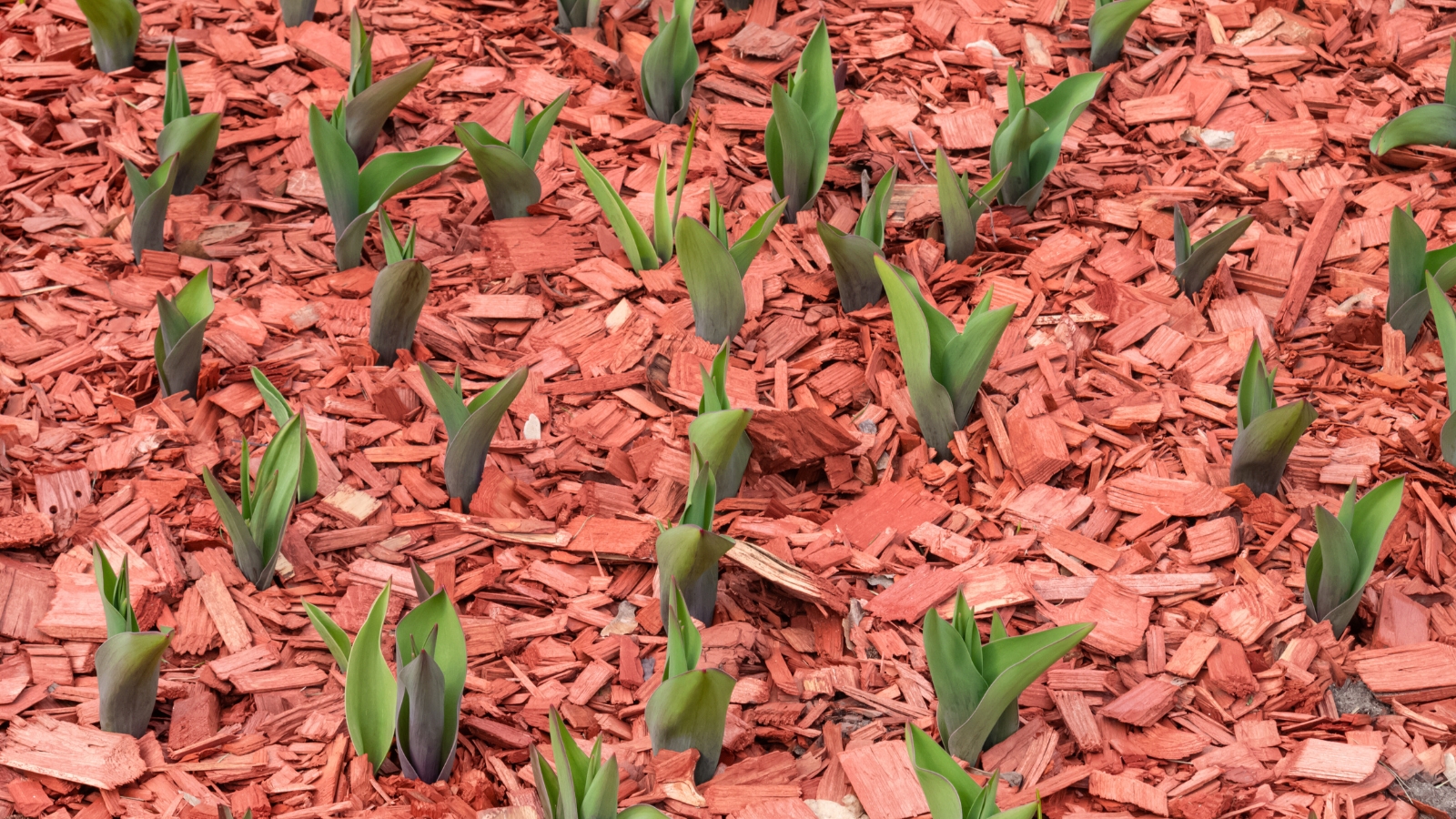

At planting, add a layer of compost and mulch to help regulate soil temperatures, retain moisture, and suppress weeds. Mulch helps preserve the soil cool all through warmth spells to keep up leaves from popping up too early.
A 3-inch layer of leaf litter, clear straw, or bark offers added insulation. The insulation protects in the direction of winter freeze/thaw cycles, which might set off frost heaving. Soils naturally freeze and thaw with temperature fluctuations.
In early spring, lighten the layer if it’s thick for the photo voltaic to warmth the roots, and so new leaves can emerge.
One different ingredient of security for newly planted selections pertains to wildlife. Carbohydrate-filled tulip bulbs are participating to squirrels, chipmunks, raccoons, deer, and further. In case your bulbs are inclined to wildlife damage, preserve an pure repellant helpful. Some gardeners dip their bulbs in a bucketful of granular repellant at planting and reapply to soil surfaces generally, considerably after rains.
An overlay of hen wire fencing helps deter digging. You could as properly interplant with daffodils or snowdrops, which can be poisonous to wildlife. Basic, planting in abundance is without doubt one of the finest methods to ensure a full present, even when some are misplaced to native foragers.
[ad_2]
Provide hyperlink
